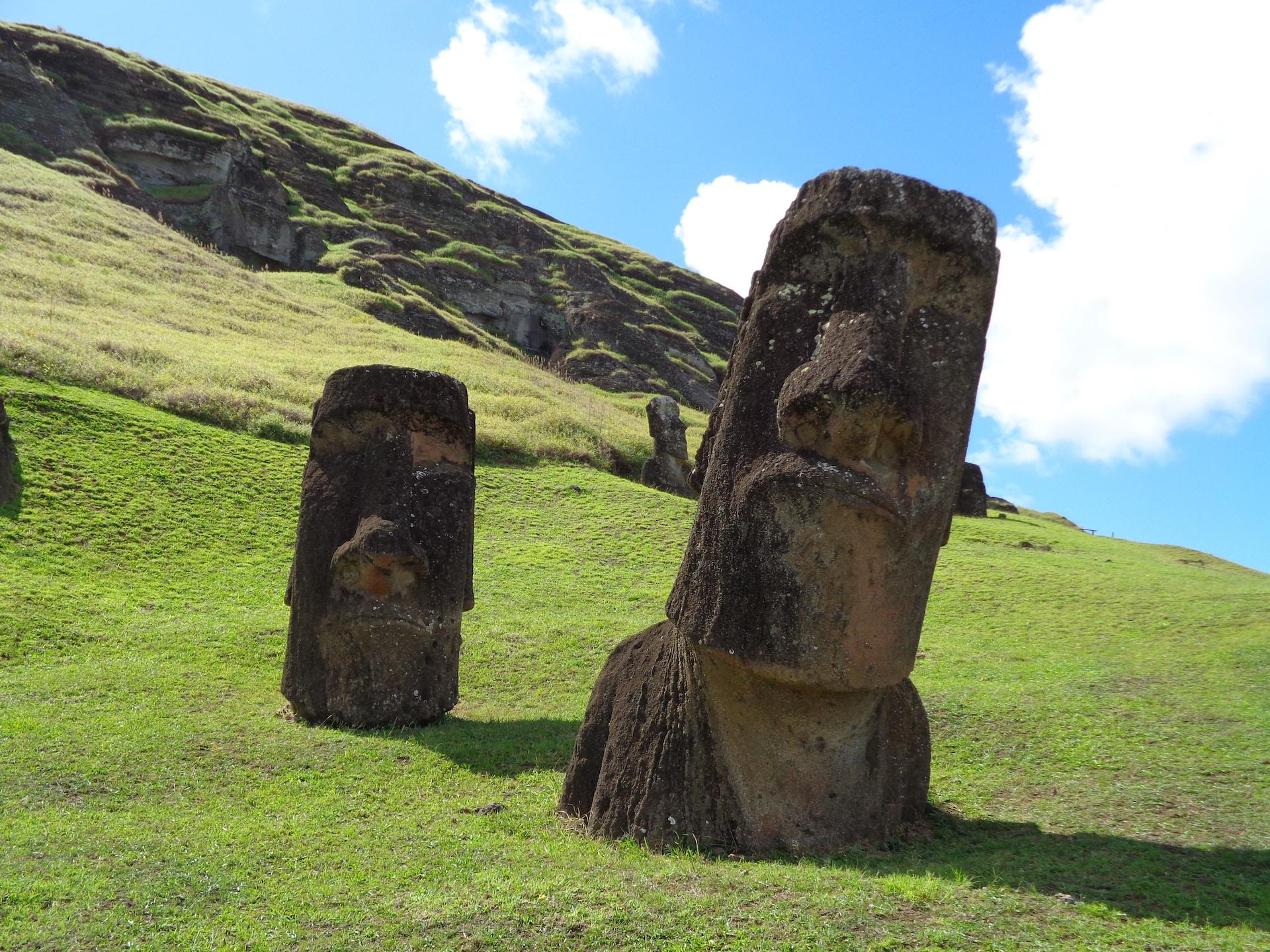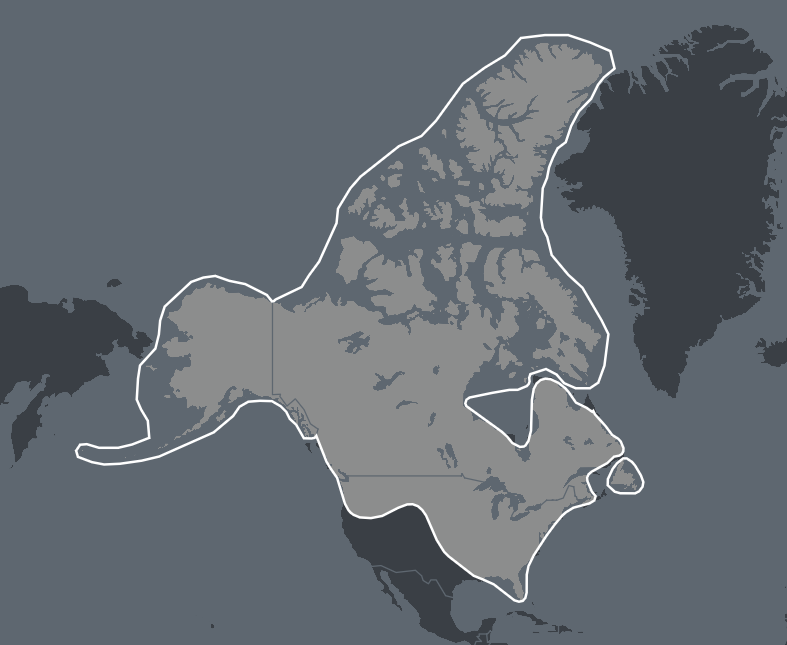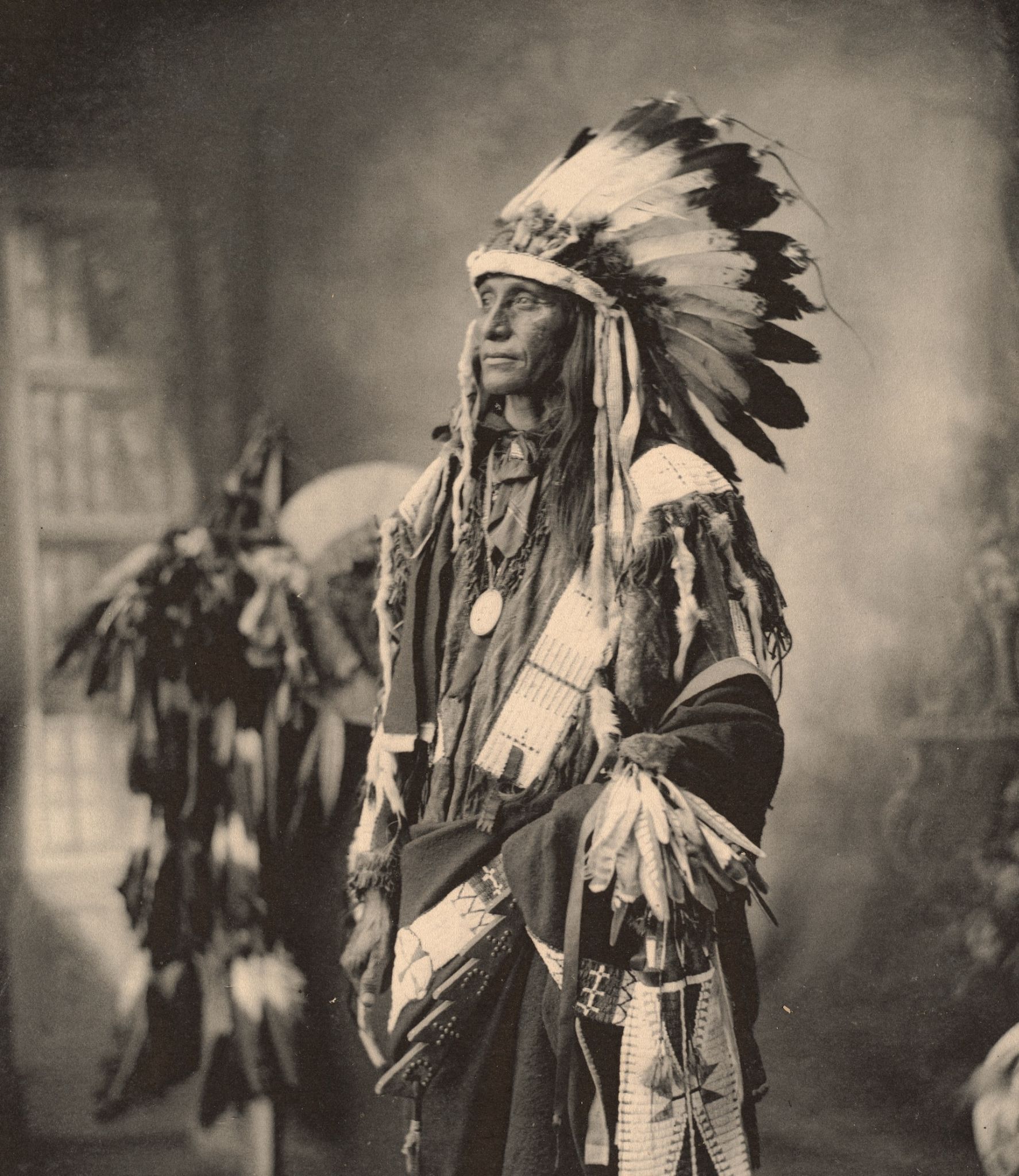What is Indigenous Americas-North DNA Ethnicity on Ancestry?
You may match multiple regions, some that are very simple to understand but what if you receive a match in the Indigenous Americas region? Well, you certainly wouldn’t be alone because there are over five million Americans who identify as Native American.
What then is the Indigenous America North region? Who are the people that this DNA comes from? What does it mean to possess this result in your ethnicity? To answer all these questions and more, keep reading.
History of Humans in the Americas
The Land Bridge:
Although there is no exact date for when humans first arrived in the Americas there are several prevailing theories. The most common one of course being the land bridge theory. During the last ice age between 19,000 – 8700 BC, sea levels were 100 feet below the modern-day. This was due to vast quantities of water being frozen in glacier form.
During that last ice age, the Bering sea as we know it today was actually a land bridge reaching all the way to Siberia. It is thought that around 14,000 years ago stone age hunters and gatherers followed game across this land bridge and became the first humans to settle within the Americas.
It is also believed that gradually these settlers then headed deeper into the Americas, traveling south in small groups. Due to the ongoing effects of the ice age these groups remained small because conditions were not conducive with large settlements or nomadic tribes.
Today's Indigenous peoples likely descend from a now-vanished ancient group known as the Paleo-Siberians. In DNA testing Indigenous Americas DNA has little in common with modern-day Siberians but in 2019 a 10,000 year old skeleton found in Siberia did show notable similarities to modern-day Native peoples in the Americas.
Traveling by Sea:
There exist several theories whereby early indigenous people of the Americas may have interacted and bred with oceanic explorers prior to the arrival of Columbus. In DNA tests taken of inhabitants of Rapa Nui (Easter Island), these people showed small sections of Native American DNA.

Easter Island is over 2000 miles away from the closest contact with the Americas which would be the coast of Chile. The DNA suggests that these Easter Islanders had a Native American Ancestor from around 1280 – 1495 A.D. It is therefore likely these seafaring Polynesians made the trip to the Americas and some may have stayed.
Recent archaeological evidence also indicates that Vikings were present in the United States around the 11th century A.D. It is reasonable to assume there would be a possibility that some may have settled and assimilated into local tribes.
Indigenous Americas North DNA Region
The Indigenous Americas North DNA region is a vast one that spans two countries and many of the states of America. This region covers the entirety of Canada and the surrounding Islands of North America. It also covers the following US states:
- Alaska
- Washington
- Oregon
- Montana
- Idaho
- Northern Wyoming
- North Dakota
- South Dakota
- Nebraska
- Kansas
- Oklahoma
- Minnesota
- Iowa
- Missouri
- Arkansas
- Louisiana
- Wisconsin
- Illinois
- Mississippi
- Michigan
- Indiana
- Kentucky
- Tennessee
- Alabama
- Georgia
- Florida
- South Carolina
- North Carolina
- Virginia
- West Virginia
- Ohio
- Maryland
- New Jersey
- Pennsylvania
- Connecticut
- Massachusetts
- New York
- Vermont
- Maine

Native American History
As mentioned humans arrived in the Americas tens of thousands of years ago and may have done so in at least three significant waves of migration. Entering in through the Bering Strait land bridge over time these early peoples would have spread out throughout North America expanding to the east and to the south.
Some of those groups would have carried on south overtime into what we today know as Central and South America but those who settled into North America became the Native American cultures we know today.

Historically the Indigenous peoples of North America tended to be a semi-nomadic group of hunter-gatherers who had their established ranges. Their individual tribal origin stories were passed down over thousands of years verbally and often include stories of long migrations.
Unlike some of the South American indigenous civilizations the North American groups did not tend to create permanent architecture or settle in large numbers. They would gather the fruits and vegetables that they required and hunt for the meat they needed for survival.
Over time some plains groups started to realize they could affect the growth of the plants they needed. This included things like squash and beans. Around a thousand years ago however a newer crop arrived from the tropics, maize.
First cultivated in Mexico several thousand years ago over time the growing of maize would have been passed from tribe to tribe from Central America all the way to the Great Plains region.
Europeans Arrival
The Native tribes of North America lived alongside each other sometimes cooperating sometimes at war but there was a balance. This would all change in the years after Christopher Columbus first arrived in the Americas in 1492.
Spanish Explorers were the first to encounter the North American tribes making significant contact in Florida and along the Gulf Coast. The European mentality was one of “The Doctrine of Discovery.” Essentially as they explored and “discovered” new lands they could claim them.
Through the 16th to 19th centuries the Native American populations sharply declined due to epidemic diseases brought by European settlers and early conflicts between the indigenous groups and the new settlers.
There is much conjecture as to how many indigenous people were living in North America prior to the European contact but numbers are estimated between 720,000 to as high as 15 million. Around 1800 the Native population of what is the present United States had dropped to 600,000 and by the 1890s this had reached just 250,000.
How Did You Inherit Indigenous American DNA?
It is important to note that due to the small number of original humans that likely crossed the land bridge and thousands of years of isolation, Indigenous DNA is very distinct.
Interactions between the tribes of North America and the incoming European settlers sometimes led to intermarriage. As a result indigenous DNA could be part of a person's DNA generations later without there being an obvious reason for it.

Depending on how high your percentage of Indigenous American DNA is, its origins can vary. If you have a high percentage you may have a recent ancestor who was 100% Indigenous. Often if this is the case you would likely have some idea of this.
In lower percentages of Native DNA, it might be an indication of a more distant unknown indigenous ancestor. In order to discover this connection, you may have to do some deep research to try and pinpoint at what point that DNA entered your family tree.
Why Is Native American Ancestry Hard to Research?
There is a dark mark on US history and that is the treatment of Native Americans. A people who roamed the Americas freely for tens of thousands of years but over the past few centuries they have been brutally treated.
Making up roughly 2% of the country's population, the atrocities doled out upon the Native peoples of the United States are too numerous to mention. But suffice to say family records were not well kept by the United States government probably because they didn’t want to record what they were doing to the Native tribes.
Today roughly 30% of all Native Americans live on reservations. These are areas that essentially the US government forced the tribes to settle in and generally have little value to the government. Interestingly, if precious resources were historically found on one of these reservations the government would find a reason to move the community elsewhere.
So essentially speaking Native American ancestry is often dependent on local reservation records as today they have their own autonomy. Things are getting better but still not as good as they should be.
Finding Native American Genealogy Records
When it comes to family history records these will often have been created by the government of the individual reservations. This means you will need to know which reservation your ancestor was born on. If your family has not lived on the reservation for a while you may need to prove your connection to the tribe in order to access these records.
Records can be found in tribal archives, government censuses, catholic church records of missionaries and local historical societies. Also note that records may not be in just one place. After the Indian Removal Act of 1830 thousands of Native Americans were moved from their tribal lands to regions west of the Mississippi.
Along the way they encountered white settlers and on occasion there was intermarriage which may be recorded. It is therefore a good idea to understand the path taken by these Native Americans after they were removed from their ancestral lands.
It is no easy feat to trace Native American ancestry especially because of the upheaval and strife inflicted upon them over the past few centuries. Records can be hard to find but if you are persistent and do your research you may get lucky and discover that illusive Native ancestor.
Final Thoughts
The indigenous Americas North DNA region is vast and includes a historically broad region. It encompasses the North American tribes which were once varied and widespread. There was a lot of contact between these tribes and they passed ideas and concepts this is clear by the eventual arrival of maize cultivation in the Great Plains region around a thousand years ago.
To have DNA from this indigenous Americas region is a connection to the very first humans who walked into North America. It is a rich cultural connection that far predates Europeans on the continent.
Link To or Reference This Page
We spent a lot of time downloading, cleaning, merging, and formatting the data that is shown on the site.
If you found the data or information on this page useful in your research, please use the tool below to properly cite or reference Name Census as the source. We appreciate your support!
-
<a href="https://namecensus.com/blog/what-is-indigenous-americas-north-dna-ethnicity-on-ancestry/">What is Indigenous Americas-North DNA Ethnicity on Ancestry?</a>
-
"What is Indigenous Americas-North DNA Ethnicity on Ancestry?". NameCensus.com. Accessed on May 2, 2024. https://namecensus.com/blog/what-is-indigenous-americas-north-dna-ethnicity-on-ancestry/.
-
"What is Indigenous Americas-North DNA Ethnicity on Ancestry?". NameCensus.com, https://namecensus.com/blog/what-is-indigenous-americas-north-dna-ethnicity-on-ancestry/. Accessed 2 May, 2024
-
What is Indigenous Americas-North DNA Ethnicity on Ancestry?. NameCensus.com. Retrieved from https://namecensus.com/blog/what-is-indigenous-americas-north-dna-ethnicity-on-ancestry/.
